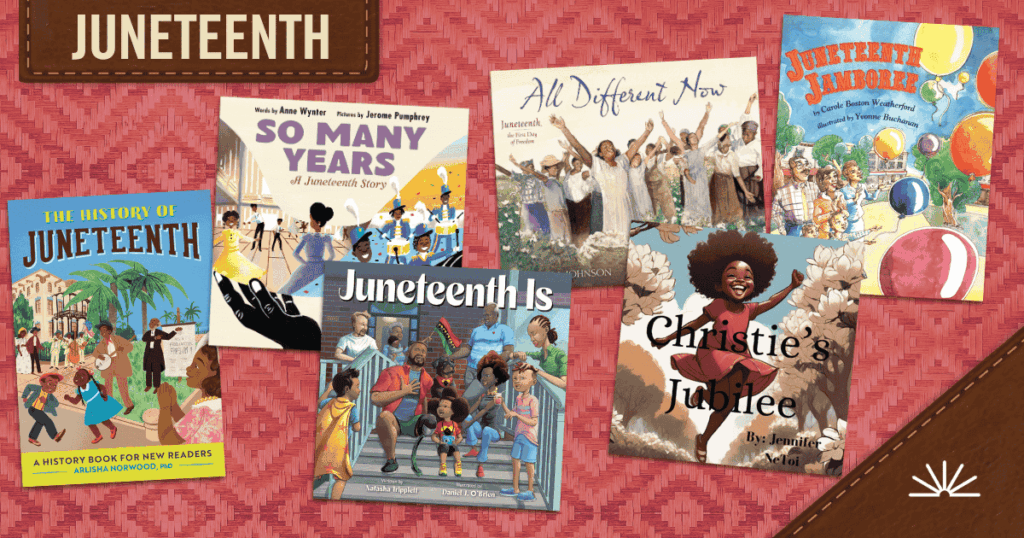
With Juneteenth a national holiday, we share our Reconstruction booklist to introduce young people to the emancipation era.
When reading picture books on Juneteenth, we were disappointed to find that many reinforce Eurocentric narratives. The most common problem with the books is that they strip African Americans of any agency in their own liberation, crediting emancipation to the stroke of a pen by Lincoln. That myth and others are described by Greg Carr, Christopher Wilson, and Clint Smith in three short essays about Juneteenth at the Zinn Education Project.
We share some of the questions we used to examine books so that you can apply them too.
Does the book acknowledge that:
-
- Enslaved people freed themselves OR does it present Abraham Lincoln as the liberator?
- Many enslaved people in Texas knew they were free but could not excercise their freedom without an army to back it up OR does it assume they were unaware of what was going on in the rest of the country?
- There were emancipation days all over the United States (and the Americas) that are still celebrated today OR does it present June 19 in Texas as an isolated event?
- Profits from slavery fueled the economies of the North and South OR does it solely reference the South?
- Whiteness is a racial identity OR does it simply name the racial identity of African Americans, leaving whiteness as the “norm”?
Keeping these points in mind, teachers and family members can fill in gaps when reading books on Juneteenth to children.
In addition to Reconstruction, find relevant titles on our lists for Black History and on Slavery, Resistance, and Reparations.
Recommended Juneteenth Books
- All Different Now: Juneteenth, the First Day of Freedom
- Christie’s Jubilee
- Ellen’s Broom
- Freedom Celebration: A Juneteenth Party
- Free at Last: A Juneteenth Poem
- The History of Juneteenth: A History Book for New Readers
- Juneteenth for Mazie
- Juneteenth Is
- Juneteenth Jamboree
- So Many Years: A Juneteenth Story
- Tell Me About Juneteenth
Leave a Reply